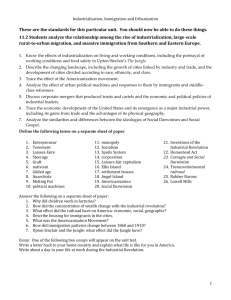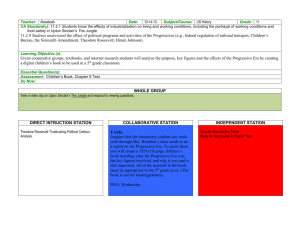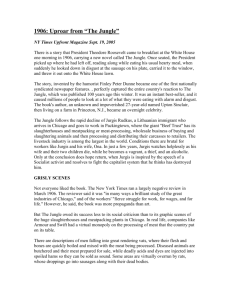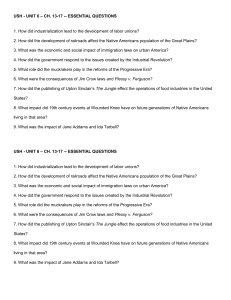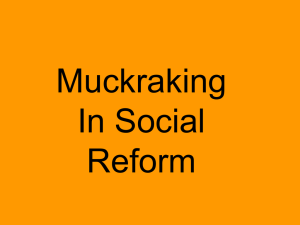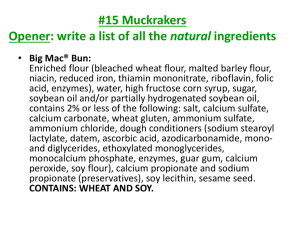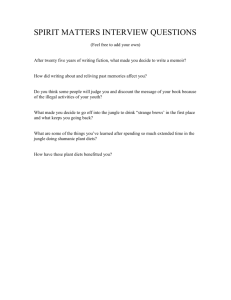Title of the Lesson - Team Work Makes the Dream Work
advertisement
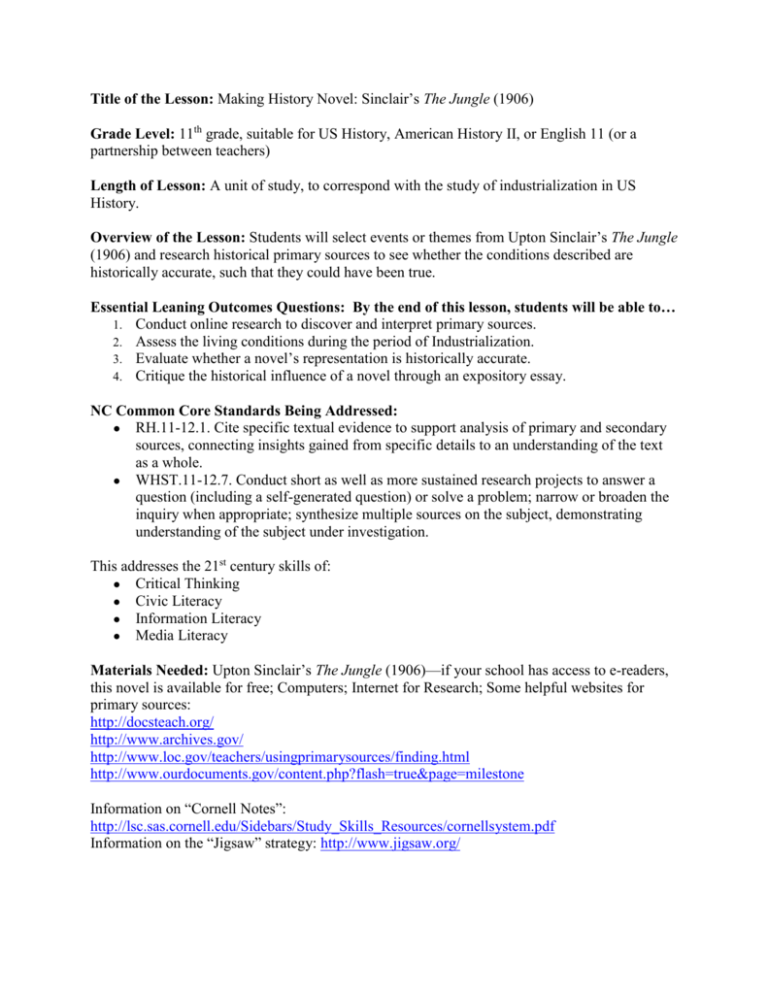
Title of the Lesson: Making History Novel: Sinclair’s The Jungle (1906) Grade Level: 11th grade, suitable for US History, American History II, or English 11 (or a partnership between teachers) Length of Lesson: A unit of study, to correspond with the study of industrialization in US History. Overview of the Lesson: Students will select events or themes from Upton Sinclair’s The Jungle (1906) and research historical primary sources to see whether the conditions described are historically accurate, such that they could have been true. Essential Leaning Outcomes Questions: By the end of this lesson, students will be able to… 1. Conduct online research to discover and interpret primary sources. 2. Assess the living conditions during the period of Industrialization. 3. Evaluate whether a novel’s representation is historically accurate. 4. Critique the historical influence of a novel through an expository essay. NC Common Core Standards Being Addressed: ● RH.11-12.1. Cite specific textual evidence to support analysis of primary and secondary sources, connecting insights gained from specific details to an understanding of the text as a whole. ● WHST.11-12.7. Conduct short as well as more sustained research projects to answer a question (including a self-generated question) or solve a problem; narrow or broaden the inquiry when appropriate; synthesize multiple sources on the subject, demonstrating understanding of the subject under investigation. This addresses the 21st century skills of: ● Critical Thinking ● Civic Literacy ● Information Literacy ● Media Literacy Materials Needed: Upton Sinclair’s The Jungle (1906)—if your school has access to e-readers, this novel is available for free; Computers; Internet for Research; Some helpful websites for primary sources: http://docsteach.org/ http://www.archives.gov/ http://www.loc.gov/teachers/usingprimarysources/finding.html http://www.ourdocuments.gov/content.php?flash=true&page=milestone Information on “Cornell Notes”: http://lsc.sas.cornell.edu/Sidebars/Study_Skills_Resources/cornellsystem.pdf Information on the “Jigsaw” strategy: http://www.jigsaw.org/ While students are reading The Jungle, they should take notes using the Cornell format. Their notes should cite textual evidence. Suggested guiding questions for students’ notes are: ● How does Sinclair portray assimilation of immigrants into American culture? ● Describe examples of working conditions for the people in “Packingtown”. ● What are some effects of child labor? ● How is the “American dream” represented? ● Give examples from the novel of how industrialization causes environmental damage. ● Describe the living conditions/quality of life of people in poverty during industrialization, as Sinclair depicts them. ● What analogies does Sinclair draw between poverty and slavery? ● What food safety concerns are raised? ● How does Sinclair portray technological development? ● What commentary does The Jungle provide on economics? ● How is government depicted in The Jungle? ● What examples of gender discrimination does Sinclair provide? ● Explain how Sinclair views socialism. Most students should be able to answer all of the guiding questions above. If students are struggling readers who need more scaffolding, teachers may divide the guiding questions among them & “jigsaw,” where students share out on the topics which they have been noting in small groups. Simultaneously (over several class periods spanning a unit of study) students conduct research on a topic of their interest (chosen from the guiding questions) during the Industrial Period. Students will find primary sources that coincide with their topic, and compare those primary sources to their topic’s portrayal in The Jungle. Students write an expository essay to evaluate the historical accuracy of The Jungle and/or its historical influence regarding the chosen topic they research. Teacher guides students through revisions and publishing to complete the writing process and finalize their essays. Assessment: Students will demonstrate understanding through their Cornell notes (formative assessment) as well as their expository essay (summative assessment.) Use a rubric to assess student essays. A sample rubric for writing in history can be found at: http://faculty.uncfsu.edu/jibrooks/frms/rubricessay.htm Sources for the Lesson: "100 Milestone Documents." Our Documents. N.p., n.d. Web. <http://www.ourdocuments.gov/content.php?flash=true>. Aronson, Elliot. "The Jigsaw Classroom: A Cooperative Learning Technique." The Jigsaw Classroom: A Cooperative Learning Technique. Social Psychology Network, n.d. Web. <http://www.jigsaw.org/>. Brooks, III, John I. "History Essay Rubric." History Essay Rubric. Fayetteville State University, n.d. Web. <http://faculty.uncfsu.edu/jibrooks/frms/rubricessay.htm>. DocsTeach. The National Archives, n.d. Web. <http://docsteach.org/>. "Finding Primary Sources" Library of Congress, n.d. Web. <http://www.loc.gov/teachers/usingprimarysources/finding.html>. "The Cornell Note Taking System." Cornell Learning Strategies Center. N.p., n.d. Web. <http://lsc.sas.cornell.edu/Sidebars/Study_Skills_Resources/cornellsystem.pdf>.
